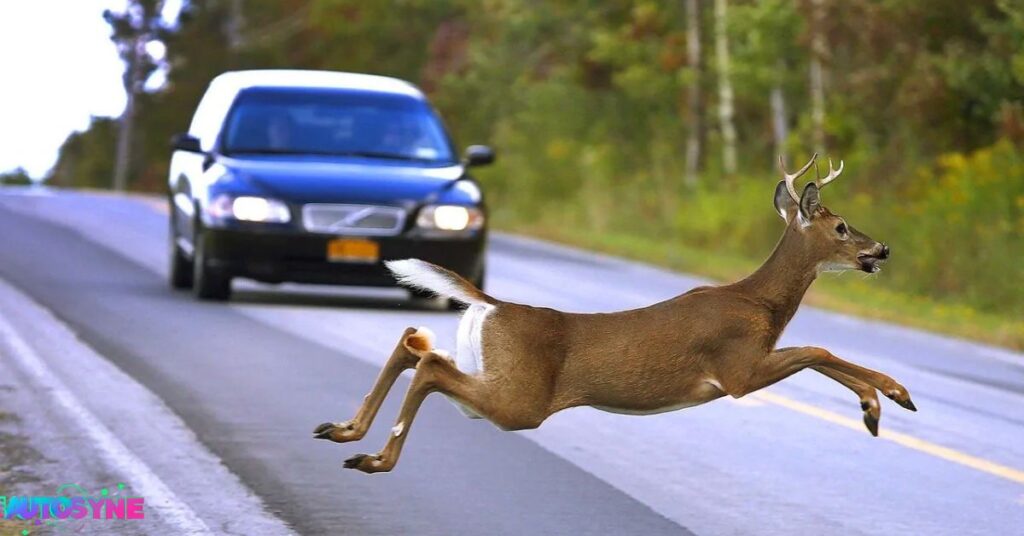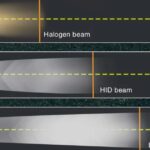Deer darting in front of cars is a common occurrence on roads, often leading to accidents. But why do these seemingly cautious animals engage in such risky behavior. Understanding the reasons behind deer jumping in front of cars is crucial for drivers to navigate safely through deer populated areas.
Ever been driving and had a deer unexpectedly jump out in front of you. It’s scary, right. But have you ever wondered why they do that. Let’s take a closer look at why deer sometimes act so recklessly on the road.
It is a fascinating mix of instincts, surroundings, and the clash between their world and ours. So, let’s search why these animals occasionally decide to take that dangerous leap.
Understanding Deer Behavior
Understanding how deer behave is really important, especially when we are driving. Deer might seem mysterious, but they actually do things in pretty predictable ways. Sometimes they jump out in front of cars because they get scared easily or because they are looking for a mate.
And when humans build stuff where deer used to live, they end up crossing roads more often. So, by knowing all this, we can be safer drivers and make sure we don’t hurt any deer either.
Read This Blog: Can Repo Man Move Another Car to Get to Yours: Unraveling the Conundrum of Repo Tactics
Reasons for Deer Jumping in Front of Cars
- Limited depth perception: Deer struggle to accurately judge distances and speeds, which can lead to misjudgments when encountering vehicles.
- Startle response: Sudden noises or movements, such as those from approaching vehicles, trigger a natural instinct in deer to flee, sometimes causing them to dart across roads.
- Herd behavior: Deer often travel in groups, and if one deer decides to cross the road, others may follow without properly assessing the danger posed by oncoming traffic.
- Mating season distractions: During the mating season, male deer are primarily focused on finding mates, potentially making them less attentive to their surroundings and the risks of crossing roads.
- Habitat fragmentation: Human development disrupts deer habitats, forcing them to navigate fragmented landscapes and increasing their interaction with roads, thereby raising the likelihood of accidents.
- Food sources near roads: Deer may be drawn to vegetation along roadsides, increasing their likelihood of crossing roads to access these food sources.
- Lack of predators: In areas where natural predators are scarce, deer may become less wary of human activity and vehicles, increasing their risk of collisions.
- Changing weather conditions: Adverse weather, such as heavy rain or snow, can reduce visibility for both drivers and deer, increasing the likelihood of collisions.
- Road infrastructure: Factors such as road design, traffic patterns, and the presence of barriers can influence deer behavior and their likelihood of crossing roads.
- Lack of alternative crossing points: In areas where natural crossings such as bridges or wildlife corridors are scarce, deer may be forced to cross roads, increasing the risk of collisions with vehicles.
Tips for Drivers to Avoid Deer Collisions
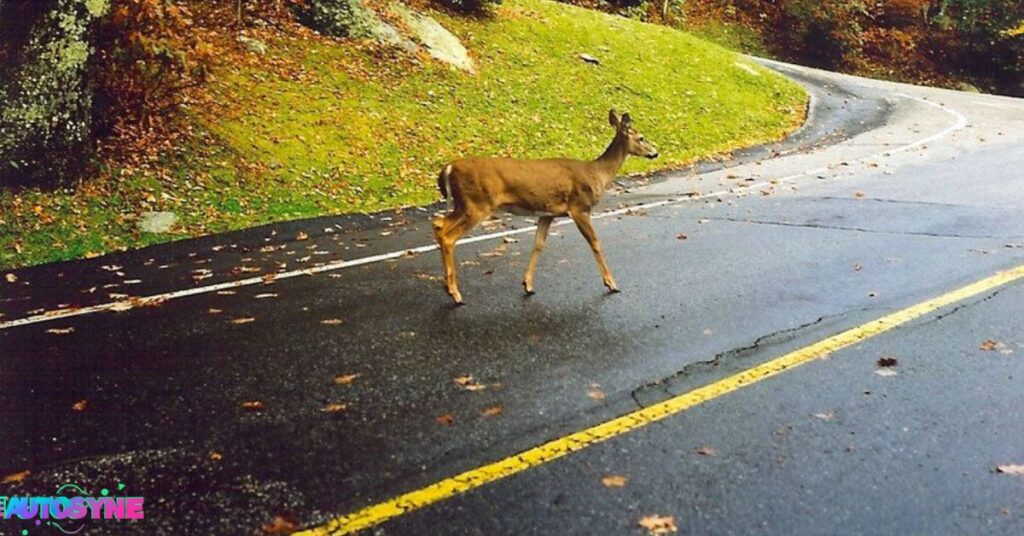
- Be vigilant: Pay attention to deer crossing signs and be aware of areas with high deer populations, especially during dawn and dusk when they are most active.
- Slow down: Reduce your speed, particularly in deer-populated areas or during mating season, to give yourself more time to react if a deer appears.
- Use high beams: When driving at night and there is no oncoming traffic, use high beams to increase your visibility and spot deer more easily.
- Scan the road: Continuously scan the road ahead and the sides for any signs of movement or the reflection of a deer’s eyes.
- Stay centered: When driving on multi-lane roads, stay in the center lanes to reduce the risk of encountering deer near the roadside.
- Use deer crossing signs: Be cautious and slow down when you see signs indicating areas where deer are known to cross.
- Avoid distractions: Stay focused on the road and avoid distractions such as using your phone or adjusting the radio, especially in deer-prone areas.
- Use caution during mating season: Be extra cautious during the deer mating season (rut), as deer may be more active and less attentive to their surroundings.
What to Do If A Deer Jumps in Front of Your Moving Vehicle
If a deer jumps out in front of your car while you’re driving, it can be scary. But there are simple things you can do to stay safe. First, don’t swerve your car, as this could make things worse. Instead, brake firmly to slow down.
Honk your horn to try and scare the deer away. Afterward, if you can, move your car to a safe spot on the side of the road and call for help. By staying calm and following these steps, you can handle the situation safely.
Don’t Swerve
It is important not to swerve. Swerving can lead to losing control of your car and cause a more serious accident. Instead, focus on keeping your vehicle steady and slowing down safely to minimize the impact.
This way, you maintain better control of your car and reduce the risk of further harm to yourself and others on the road.
Honk Your Horn
If a deer unexpectedly appears in front of your vehicle, one helpful action you can take is to honk your horn. Honking your horn can startle the deer, potentially causing it to move out of your vehicle’s path.
This sudden noise may alert the deer to your presence and give it a chance to avoid a collision. However, remember to honk in short bursts and stay focused on controlling your vehicle to ensure your safety and the safety of others on the road.
Brake Firmly
Braking firmly can help reduce your vehicle’s speed and minimize the impact if you’re unable to avoid hitting the deer. By applying the brakes firmly, you increase the likelihood of preventing a more severe collision. However, remember to maintain control of your vehicle while braking to ensure your safety and the safety of others on the road.
Get to a Safe Place
If a deer jumps in front of your moving vehicle, your priority should be to get to a safe place. After the incident, if your car is drivable, move it to the side of the road or a secure location away from traffic. Turning on your hazard lights can alert other drivers to the situation.
Once you are in a safe spot, assess any damage to your vehicle and check for injuries. If needed, contact the authorities or emergency services for assistance. Getting to a safe place helps ensure your safety and prevents further accidents or hazards on the road.
Also Read : 150+ automotive slogan ideas
Why Do Deer Stare At Headlights?
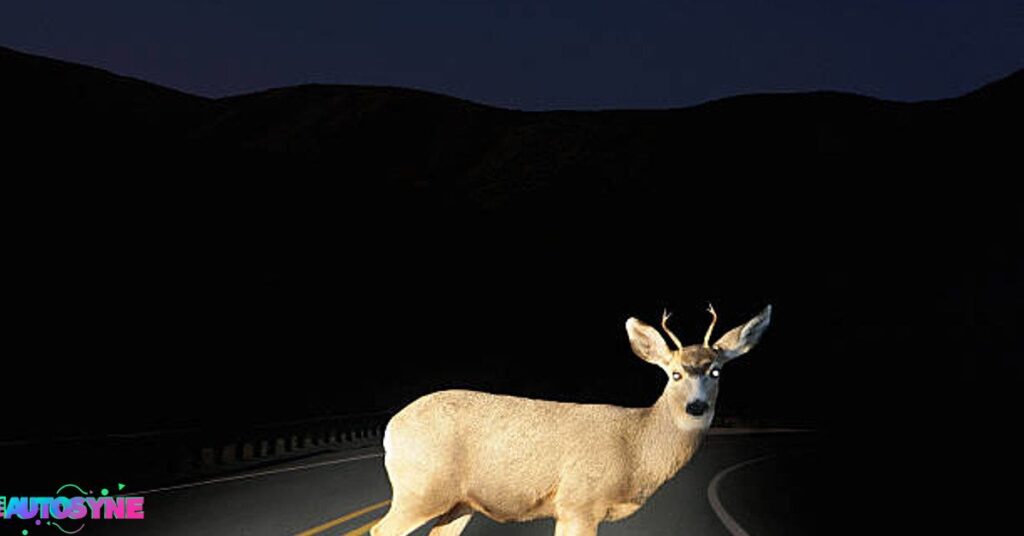
Deer stare at headlights because they are curious animals. When they see bright lights, like car headlights, they may stop and look at them. It’s like when people say “deer in the headlights.” However, this can be risky for both the deer and drivers. If deer stare at headlights, they might freeze, making it hard for them to move out of the way of cars.
This can cause accidents. So, it’s important for drivers to be careful and watch out for deer, especially at times when they are more active, like at dawn and dusk.
Why Does A Deer Blows At You?
A deer blowing at you is a warning signal. When a deer blows, it makes a snorting sound through its nostrils. This behavior is typically a sign of alarm or agitation. Deer blow to alert other deer in the area of potential danger.
They may blow at humans or other animals they perceive as threats. It’s their way of communicating to each other to stay alert and be cautious. If a deer blows at you, it’s best to give it space and avoid any sudden movements to prevent further stress or agitation.
What If A Deer Attacks You?
If a deer attacks you, it’s essential to stay calm and take immediate action to protect yourself. Here are some steps to follow:
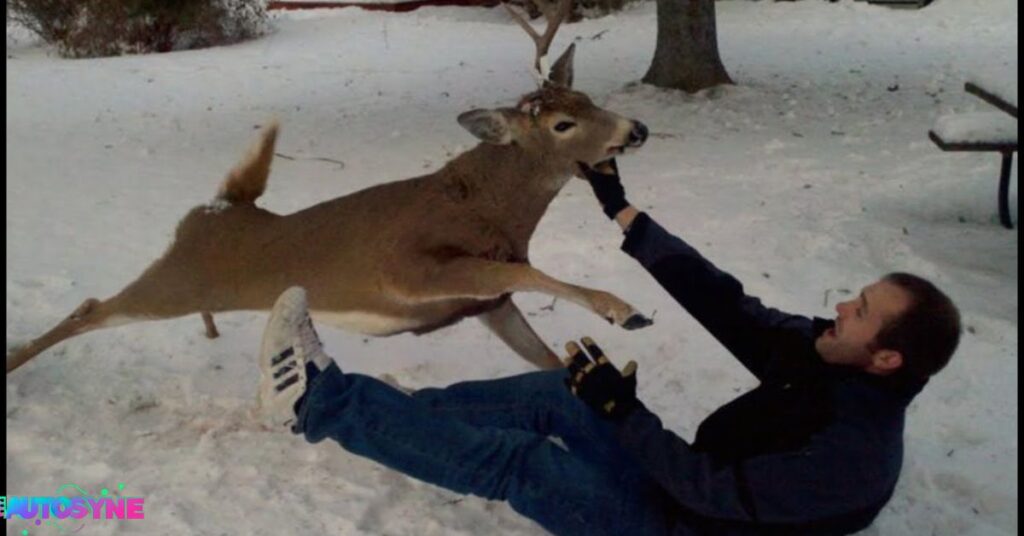
- Create distance: Try to put as much distance between yourself and the deer as possible. Slowly back away while facing the deer to keep it in your sight.
- Avoid sudden movements: Do not make any sudden movements or gestures that could further agitate the deer. Remain calm and try to appear non-threatening.
- Protect yourself: If the deer continues to approach aggressively, use any available objects to create a barrier between yourself and the deer. This could include a jacket, backpack, or stick.
- Find shelter: If possible, seek refuge in a nearby building, car, or sturdy structure to protect yourself from further harm.
- Call for help: If the situation escalates and you are unable to safely retreat, call for help immediately. Contact emergency services or animal control for assistance.
It’s important to remember that deer attacks are rare, and most deer will avoid confrontation with humans if given the opportunity to escape. However, it’s crucial to be prepared and know how to respond calmly and effectively in case of an aggressive encounter with a deer.
Frequently Asked Questions
Do deer run when they see you?
Yes, deer often run away when they see humans as they are naturally shy and cautious animals.
Do deer get aggressive with humans?
Deer typically do not get aggressive with humans unless they feel threatened or cornered.
Can a deer bite you?
Yes, in rare cases, a deer can bite humans if they feel threatened or provoked, but it’s uncommon.
Are deer afraid of humans?
Generally, deer are afraid of humans and will avoid confrontation if given the chance to escape.
What not to do when you see a deer?
When you see a deer, do not approach or attempt to feed it, as this can habituate them to humans and lead to dangerous behavior.
What does it mean when a deer approaches you?
If a deer approaches you, it may be curious, but it’s important to give it space and avoid making sudden movements to prevent it from feeling threatened.
Conclusion
Understanding deer behavior is key to ensuring safety for both humans and wildlife. From their tendency to run when they see humans to their rare but potential for aggression, knowing how to interact with deer is vital.
While deer may seem timid, it’s crucial to remember they are wild animals and should be respected from a distance. By following precautions, such as avoiding sudden movements and refraining from feeding them, we can coexist harmoniously with these majestic creatures.
So, whether you encounter a deer on the road or in the wilderness, approach with caution, gives them space, and appreciates the beauty of nature’s inhabitants while prioritizing safety for all.

Thomas is a seasoned automotive writer with five years of expertise. His passion for cars fuels insightful articles on industry trends, technology, and driving experiences.

